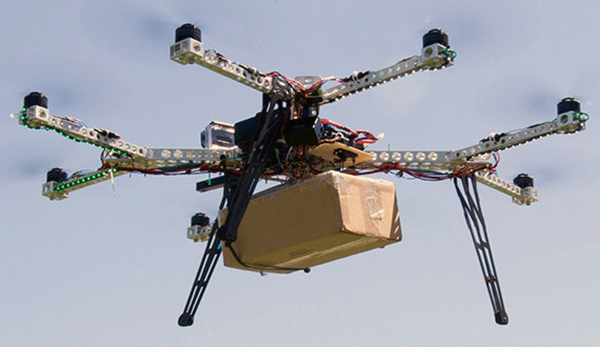Young scientists at the Defence Research and Development Organisation (DRDO) have been tasked to design and develop a new class of load-carrying unmanned aerial vehicle (UAV) that is capable of operating from high-altitude bases for undertaking logistic operations along the Himalayan frontier.
The ‘high-altitude operating, vertical take-off and landing drone’, driven by eight propellers, will have the ability to be launched from altitudes of up to 15,000 feet and the capacity to airlift up to 50 kg of cargo over a distance of 10 km.
The project is being undertaken by the DRDO Young Scientist Laboratories (DYSL), a recently formed group of five specialised research establishments where all scientists, including the directors, are required to be below 35 years of age.
Located at Bengaluru, Chennai, Hyderabad, Kolkata and Mumbai, their core focus areas are artificial intelligence, cognitive technologies, smart materials, asymmetric technologies and quantum technologies, respectively.
In a request for proposal issued earlier this month seeking development partners, DYSL has defined its requirement for an octocopter (eight-engined UAV) with a carbon-composite airframe having a gross all-up weight, including payload, of less than 80 kg.
The octocopter is required to have a payload capability of 50 kg at mean sea level and above 20 kg at extreme altitude, and be able to operate at temperatures up to minus 20 degrees Celsius.
Artificial intelligence-based target tracking and accurate launching and landing, geo fence for operating within a defined geographical area, fully autonomous and semi-autonomous flight modes, GPS, real-time video telemeter and a failsafe system that enables the UAV to return to base in case of loss of radio link, low battery, etc, are other required features for the flying machine.
Cargo drones are being looked at as being force multipliers, according to DRDO scientists. Besides enabling faster and continuous supply to troops deployed at high-altitude areas and difficult-to-reach locations, they can be used for reconnaissance and mapping. In times ahead, they can also be modified for combat operations.
Urgent supplies of essential items such as rations, water, fuel, ammunition and medicines to forward posts in remote areas at present depends on helicopters, which is a costly affair, or ferried by porters and mules, which is time-consuming.
The use of UAVs for logistics in the mountains came into focus when the stand-off between India and China began along the Line of Actual Control in 2020, with propaganda videos showing Chinese troops on the frontline being delivered freshly prepared hot food from base camps.
Last year, a Noida-based Indian firm had demonstrated a cargo hexacopter (six-engined), christened MR-20, for logistic operations in high-altitude areas. The Army is reportedly procuring 48 of these drones that can carry a load of up to 20 kg.
The defence forces have been using various types of imported and indigenous drones, both fixed wing as well as rotary wing, for surveillance and recce. Several projects are already under way in the country to develop new drones of different categories to meet various requirements, including armed UAVs for combat.


















